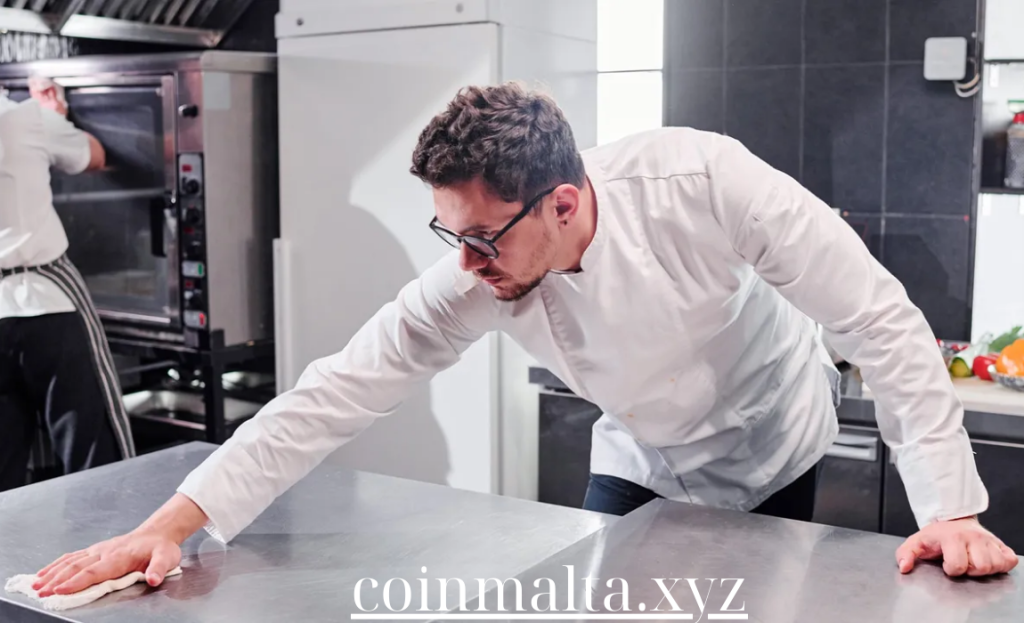Food Safety in Food Service
Effective Food Safety Management for Restaurants Ensuring Customer Health
Maintaining food safety in restaurants is a critical responsibility for ensuring the health and well-being of customers. Implementing effective food safety management systems can prevent foodborne illnesses, ensure compliance with health regulations, and build trust with diners. In this guide, we’ll explore key practices, strategies, and systems that restaurants should adopt to ensure optimal food safety standards.
1. Develop a Comprehensive Food Safety Management System (FSMS)
A well-structured Food Safety Management System (FSMS) forms the foundation of safe food handling in any restaurant. An FSMS integrates all necessary protocols and procedures to manage food safety hazards. Commonly, FSMS is based on HACCP (Hazard Analysis Critical Control Points) principles, a globally recognized system for ensuring food safety through the identification and control of potential risks.
Key Steps to Building an FSMS:
- Hazard Identification: Determine potential biological, chemical, or physical hazards in the food preparation process.
- Critical Control Points (CCPs): Identify steps in the process where hazards can be prevented or minimized, such as cooking or refrigeration temperatures.
- Establish Critical Limits: Set measurable criteria for each CCP, such as minimum cooking temperatures or maximum storage times.
- Monitor Procedures: Implement regular checks to ensure each CCP is under control.
- Corrective Actions: Have procedures in place for when critical limits are not met (e.g., reheating food to the proper temperature).
- Record Keeping: Maintain detailed records to verify that safety procedures are being followed.
- Verification and Review: Regularly review the FSMS to adapt to changes and improve processes.
2. Maintain Personal Hygiene Standards
Employee hygiene plays a crucial role in preventing contamination in restaurants. Food handlers must adhere to strict hygiene practices to avoid the spread of harmful bacteria or viruses.
Personal Hygiene Best Practices:
- Handwashing: Staff should wash hands frequently, especially before handling food, after using the restroom, or touching raw ingredients. Proper handwashing techniques should be followed, using warm water and soap for at least 20 seconds.
- Gloves and Hairnets: Use disposable gloves when handling ready-to-eat foods and wear hairnets or caps to prevent hair contamination.
- Health Checks: Conduct routine health assessments to ensure that staff are free from illnesses that could contaminate food. Sick employees should avoid handling food.
- Proper Uniforms: Ensure that all employees wear clean, sanitized uniforms, aprons, and closed-toe shoes to maintain cleanliness.
3. Implement Temperature Controls for Food Storage and Preparation
Temperature control is essential in preventing the growth of harmful bacteria in food. Whether storing, cooking, or serving, maintaining the correct temperature at every stage of food handling ensures food safety.
Temperature Control Guidelines:
- Cold Storage: Refrigerators should be set at 40°F (4°C) or below, while freezers should be set at 0°F (-18°C) or below to prevent bacterial growth in raw ingredients and prepared foods.
- Cooking Temperatures: Different foods require specific cooking temperatures to kill harmful bacteria. For instance, poultry should be cooked to an internal temperature of 165°F (74°C), while beef and pork should reach 145°F (63°C).
- Hot Holding: Prepared food held for service should be kept at 140°F (60°C) or above to prevent bacteria from multiplying.
- Cooling Procedures: Foods should be cooled quickly to avoid staying in the “danger zone” (40°F to 140°F) where bacteria thrive. Use shallow containers, ice baths, or blast chillers to cool foods rapidly.
4. Prevent Cross-Contamination
Cross-contamination occurs when harmful bacteria or allergens are transferred from one surface or food item to another, leading to foodborne illnesses. Preventing cross-contamination is critical in ensuring food safety.
Strategies to Prevent Cross-Contamination:
- Separation of Raw and Cooked Foods: Keep raw meats, seafood, and eggs separate from cooked foods and ready-to-eat ingredients.
- Use of Color-Coded Equipment: Implement color-coded cutting boards, knives, and utensils for different types of food (e.g., red for meat, green for vegetables) to minimize the risk of cross-contamination.
- Sanitizing Surfaces and Utensils: Clean and sanitize all surfaces, utensils, and equipment after each use, especially when transitioning from handling raw to cooked or ready-to-eat foods.
- Designated Allergen-Free Areas: To avoid cross-contact with allergens, designate separate preparation areas and tools for allergen-free dishes.
5. Ensure Proper Food Handling and Storage
Proper handling and storage of ingredients are crucial for maintaining food safety. Restaurants should follow strict guidelines for receiving, storing, and rotating ingredients to prevent contamination.
Best Practices for Food Handling and Storage:
- Inspect Deliveries: Check the temperature and condition of food products upon delivery. Reject any items that don’t meet safety standards or are damaged.
- First In, First Out (FIFO): Implement the FIFO system to ensure older stock is used before newer stock, minimizing spoilage and waste.
- Store Food Correctly: Keep dry goods in a cool, dry area, and ensure that raw ingredients are stored below cooked foods to prevent contamination from juices or bacteria.
- Proper Labeling: Label all stored foods with the date of preparation or delivery to ensure they are used within safe time frames.
6. Train Staff on Food Safety Protocols
Regular food safety training is essential for all restaurant employees, from kitchen staff to front-of-house personnel. A well-informed team is the first line of defense in maintaining food safety standards.
Key Training Focus Areas:
- Safe Food Handling: Ensure all staff are knowledgeable about safe food handling practices, including hygiene, proper temperatures, and preventing cross-contamination.
- Allergen Awareness: Educate staff on managing and labeling allergens to prevent cross-contact and ensure customer safety, especially for those with food allergies.
- Emergency Procedures: Train staff on how to handle food safety incidents, such as food recalls, spoilage, or contamination.
7. Regular Cleaning and Sanitizing
Maintaining a clean and sanitized environment is essential to preventing the spread of bacteria and viruses in a restaurant setting.
Cleaning Protocols:
- Daily Cleaning: Create daily checklists for cleaning surfaces, kitchen equipment, and dining areas. High-contact surfaces like countertops, utensils, and door handles should be cleaned frequently.
- Scheduled Deep Cleaning: Regularly schedule deep cleaning of kitchen equipment (e.g., ovens, grills, refrigerators) to prevent grease build-up and contamination.
- Sanitizing Solutions: Use food-safe sanitizing solutions to clean surfaces and equipment. Ensure that staff are trained in proper dilution and application techniques.
8. Manage Food Allergies and Dietary Preferences
Food allergies can be life-threatening, so restaurants must take extra precautions to protect customers who have dietary restrictions.
Allergen Management Best Practices:
- Menu Transparency: Clearly list allergens on the menu or provide a detailed allergen guide upon request. Common allergens include dairy, peanuts, tree nuts, shellfish, soy, and gluten.
- Allergen-Free Zones: Designate specific areas in the kitchen for preparing allergen-free meals to reduce the risk of cross-contact.
- Staff Training: Train all staff to handle allergen-related requests and emergencies, ensuring that they understand the importance of accurate communication with customers.
9. Conduct Regular Food Safety Audits
Regular audits and inspections help ensure that food safety standards are consistently met. Internal audits can identify potential risks, allowing restaurants to address issues before they become problems.
Audit Strategies:
- Internal Inspections: Assign a food safety manager or team to conduct regular checks on food handling, storage, cleaning, and hygiene practices.
- Third-Party Audits: Consider hiring third-party auditors to provide an objective assessment of food safety practices and ensure compliance with local health regulations.
Conclusion
Effective food safety management is crucial for maintaining a healthy and safe dining environment. By implementing an FSMS, promoting hygiene practices, controlling temperatures, preventing cross-contamination, and ensuring staff are well-trained, restaurants can minimize the risk of foodborne illnesses. Regular audits and proactive measures will help sustain food safety practices, ensuring that customers can dine with confidence in your restaurant.

